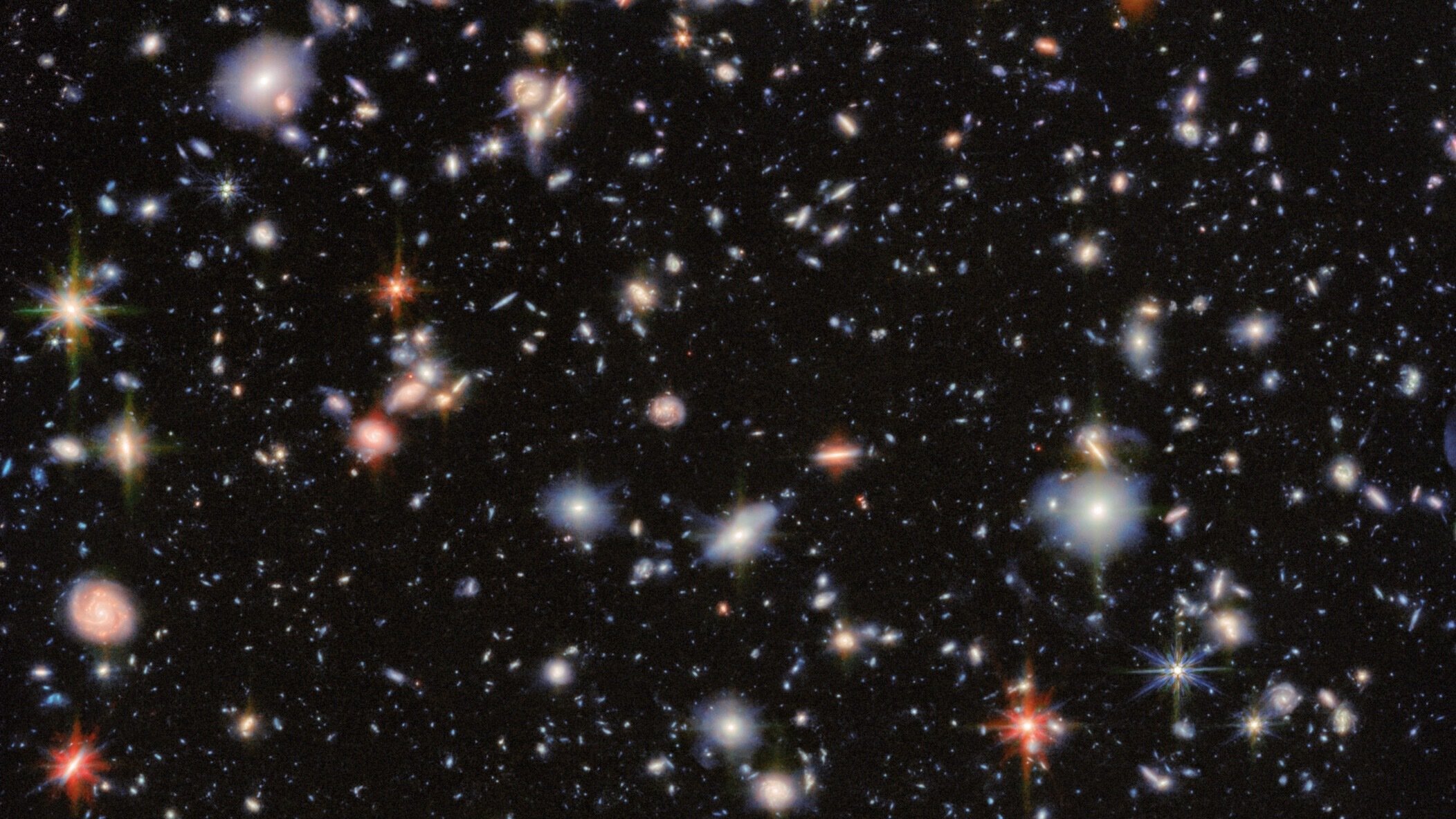A recent study utilizing the James Webb Space Telescope has significantly altered the understanding of the ages and distances of ancient galaxies. The findings reveal that some of these galaxies are much older and farther away than previously thought, reshaping the cosmic timeline. This research, part of the MIRI Deep Imaging Survey, was published in the journal Astronomy & Astrophysics.
The survey focused on a segment of the sky previously examined by the Hubble Space Telescope more than 20 years ago. At that time, Hubble offered an ambitious ultra-deep field image, capturing light from a seemingly empty area of space. The resulting image revealed thousands of distant galaxies, leading researchers to recognize the immense potential of this region. Now, the James Webb Space Telescope has revisited this patch, uncovering further details about the universe.
Unveiling Cosmic History
The MIRI Deep Imaging Survey employed the telescope’s mid-infrared instrument, enabling the detection of light wavelengths invisible to the naked eye. According to the study, Webb observed the Hubble Ultra Deep Field area for a total of 100 hours, including 41 hours using a specific filter. This extensive observation captured faint signals from galaxies dating back to a time when the universe was only a few hundred million years old.
Researchers compared this deep field image to a core sample from the Earth, where deeper layers reveal older geological history. In this case, the image serves as a glimpse into cosmic history, showcasing light that has traveled billions of light-years. As the authors noted, “To our knowledge, this constitutes the longest single-filter exposure obtained with Webb of an extragalactic field as of yet.”
The MIDIS project identified nearly 2,500 light sources, most of which are distant galaxies. Approximately 1,000 of these sources now have revised distance estimates, based on how their light has shifted due to the expansion of the universe. This phenomenon, known as “redshift,” occurs as light stretches over time and distance.
Revising the Cosmic Timeline
The James Webb Space Telescope was designed to investigate an early period in cosmic history known as “cosmic dawn,” which occurred between 100 million and 1 billion years after the Big Bang. The telescope’s ability to detect infrared wavelengths allows it to penetrate the gas and dust prevalent in space, uncovering fainter light sources that might otherwise remain hidden.
One notable discovery from the MIDIS project involved a galaxy previously estimated to be 11.8 billion years old. This galaxy has now been re-evaluated to be approximately 13.3 billion years old, pushing its origins back to a time when the universe was only about 450 million years old. This positions the galaxy among the first wave of galaxies formed after the Big Bang.
Other objects observed in the MIDIS image include hundreds of red galaxies. Their coloration suggests they may be dusty or contain older, cooler stars. These findings illustrate the power of Webb’s MIRI instrument to identify ancient galaxies that may have been overlooked or misidentified in previous observations. Notably, the Spitzer Space Telescope, now retired, did not achieve this level of clarity.
The implications of these findings are profound for researchers examining the evolution of the universe. The study’s authors remarked, “MIDIS surpasses preflight expectations. Deep MIRI imaging has great potential to characterize the galaxy population from cosmic noon to dawn.”
As telescopes like the James Webb Space Telescope continue to unveil the mysteries of the cosmos, scientists are gaining deeper insights into how the universe evolved, from the formation of its earliest galaxies to the peak periods of star and supermassive black hole formation. These developments promise to reshape our understanding of cosmic history for years to come.































































